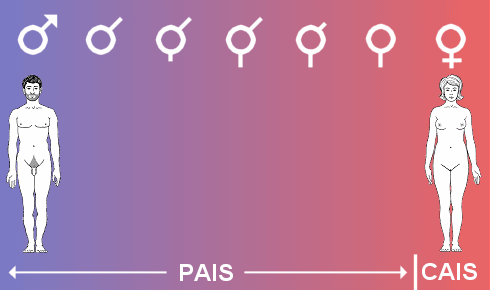|
Intersexuality - The Intersexual Spectrum
|
|
Causes of Intersexuality - Hormones
|
|
Androgen Insensitivity Syndrome (AIS)
|
|
Persons with AIS have both an X- and a Y-chromosome, just like typical males. Both of these chromosomes serve important functions: The Y-chromosome initiates the growth of testicles which, in turn, produce so-called androgens, i.e. hormones that spur the body’s development toward maleness. The X-chromosome contains a gene that allows the body to react to androgens. However, a person with AIS has some irregularity on the X-chromosome that makes the body partially or completely insensitive to androgens. As a result, the sex organs do not develop in the typical way. In the case of partial androgen insensitivity (PAIS), there is a spectrum of possible outcomes: The sex organs may turn out to be male or ambiguous in various degrees, i.e. somewhere between male and female. In the extreme case of complete androgen insensitivity (CAIS), the sex organs take a female form. In any case, the insensitivity to androgens prevents or impairs the physical manifestation of maleness before birth and during puberty and generally gives the body a more female shape. Some researchers have developed an AIS grading scale from 1 (very mild PAIS - male) to 7 (CAIS - female). This scale can be used for a detailed diagnosis and thus also for an assignment of sex. Depending on their position on the scale, babies with AIS may be raised as either males or females. One should be aware, however, that a significant minority of those with PAIS are not satisfied with their original gender assignment and decide to switch as they mature. In any event, persons with AIS are infertile.
|
The AIS Spectrum
|
|
Transitional stages from XY male to XY female
|
|

|
|
XY Male (infertile)
|
XY Female
|
|
|